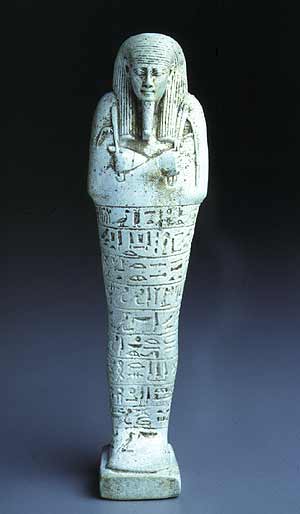 |
Permanent Collection: Ancient Egyptian Art: Shawabti of Neferibresaneith, Son of Shepenbastet Twenty-sixth Dynasty, c. 664-525 B.C. Faience. Gift of the Atlantes Society by exchange. 1998.11 The Egyptians believed that the afterlife was essentially the same as the present life, so that an individual might enjoy the same possessions, people, and privileges in both realms. By the same token, the individual was also subject to the same responsibilities and burdens, such as mandatory labor for the government. An Egyptian was periodically called upon to labor for the state, primarily maintaining the extensive system of irrigation canals. During life, this was expected, though no one wanted to spend eternity performing manual labor. The shawabti figurine provided a magical solution to this problem, acting as a substitute laborer in the afterlife. The figurines, most commonly made of faience, were inscribed with a spell from the Book of the Dead and placed in the tomb. When the deceased was called upon to do labor, the spell magically animated the shawabti, who then answered the call in the place of the deceased. The numbers of shawabtis included in the tomb increased over the years, until there was a figurine provided for every day of the year, to insure an eternity of relaxation for the owner of the tomb. |